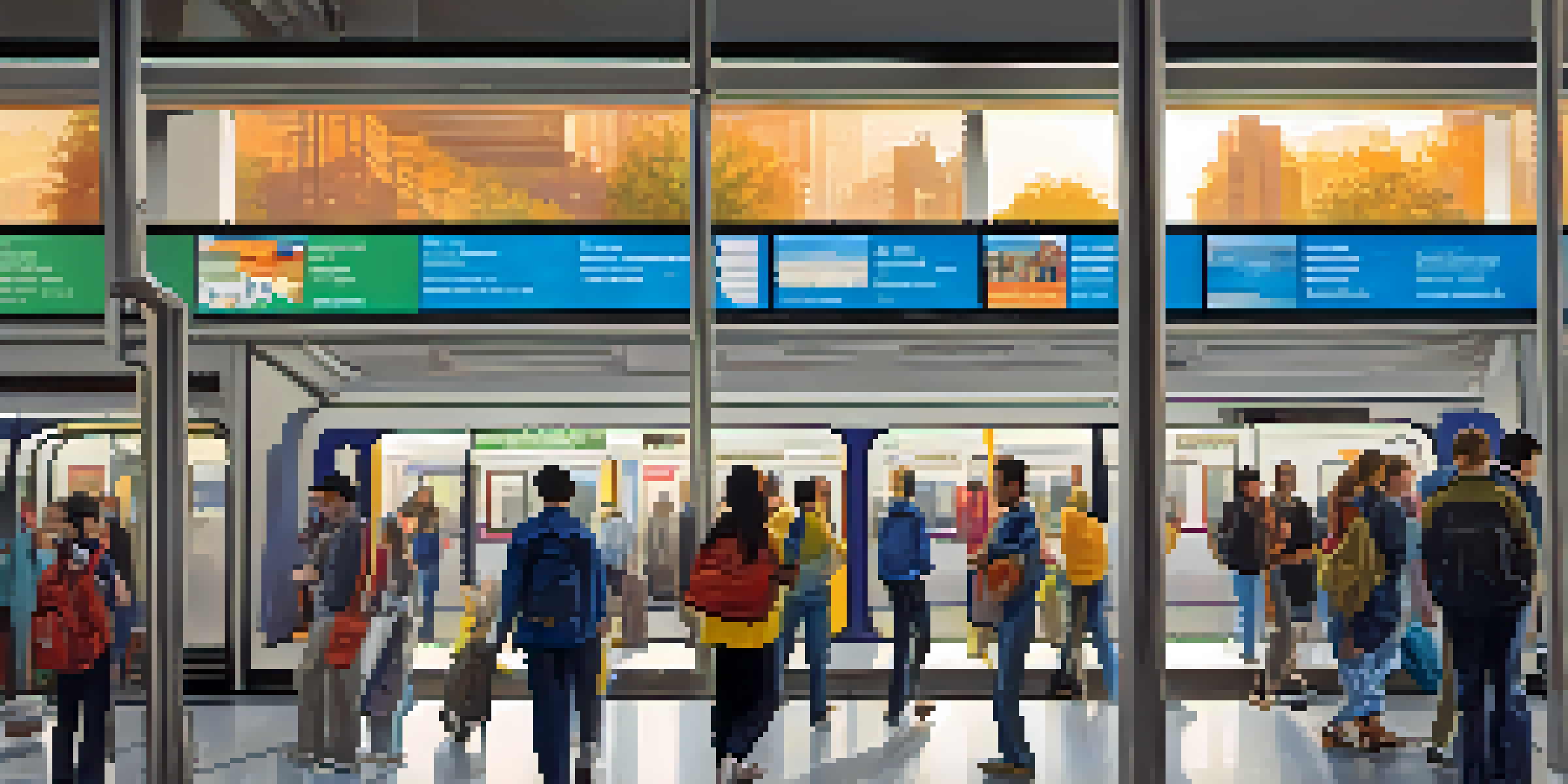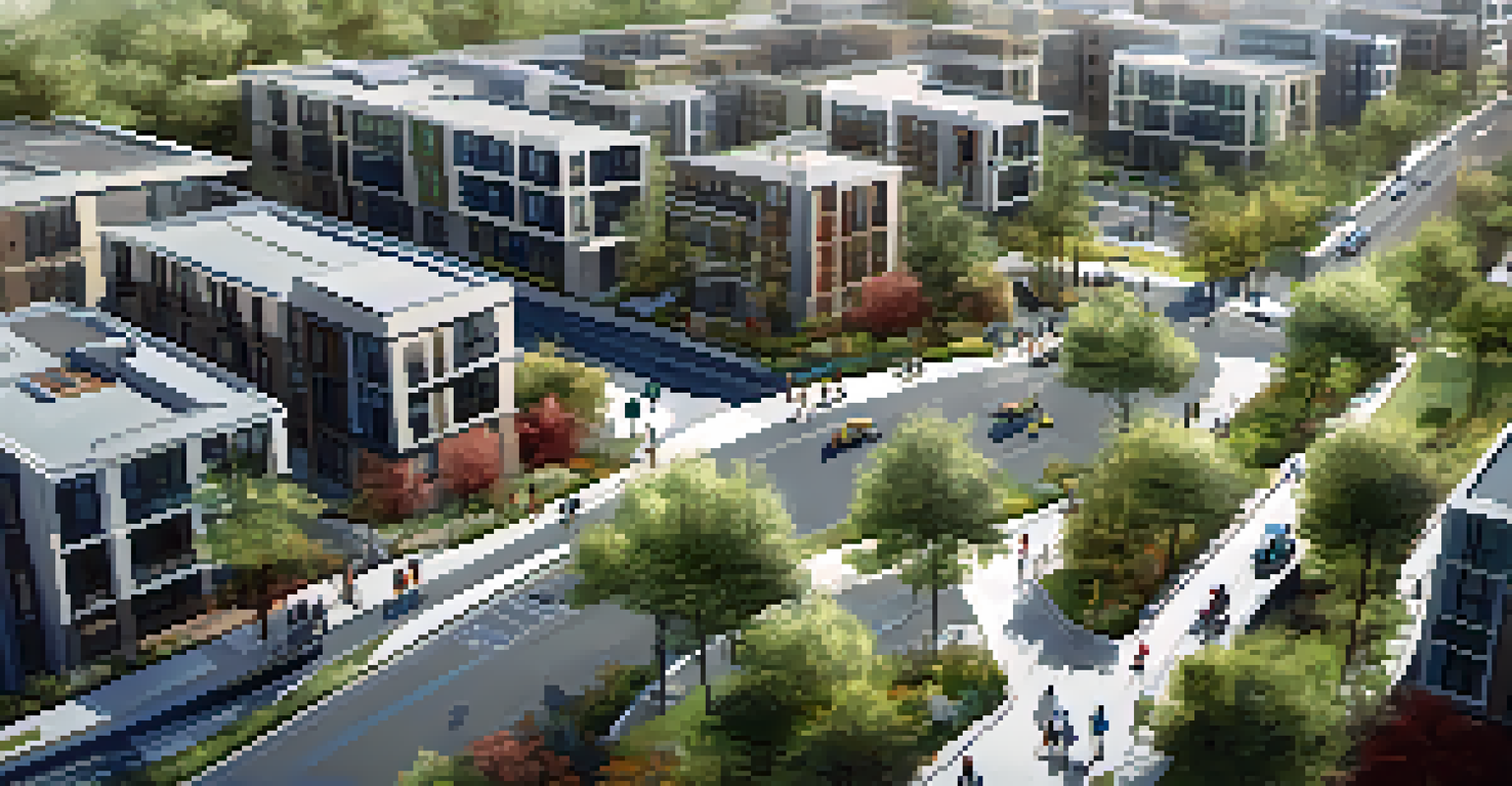Analyzing the Effects of Transportation Infrastructure on Real Estate

Understanding Transportation Infrastructure and Its Importance
Transportation infrastructure encompasses roads, bridges, railways, and airports. These systems are vital for connecting communities, facilitating commerce, and enhancing mobility. When we think about where to live or invest, the proximity to reliable transportation options often tops the list of priorities.
Transportation is the backbone of our economy and the lifeblood of our communities.
For instance, consider a bustling city with a well-connected public transit system. Residents enjoy lower commuting times and increased access to jobs, which can elevate the area's desirability. Conversely, areas with poor transportation links may struggle to attract buyers, even if the properties themselves are appealing.
Ultimately, transportation infrastructure not only affects daily life but also serves as a major factor in real estate investment decisions. Investors often seek locations with robust transport options to maximize the value of their properties over time.
How Transportation Affects Property Values
The relationship between transportation infrastructure and property values is significant. Generally, properties located near efficient transport links tend to appreciate more quickly than those situated in less accessible areas. This trend can be attributed to increased demand driven by convenience.

For example, homes near subway stations or bus routes often see higher prices due to the appeal of easy commuting. Buyers are willing to pay a premium for the added convenience, which can lead to a notable increase in property value over time.
Transportation Boosts Property Value
Properties near efficient transport links typically appreciate more quickly due to increased demand for convenience.
Moreover, as urban areas grow and evolve, the development of new transportation projects can lead to sudden spikes in property values. When new highways or rail lines are announced, nearby properties often experience a surge in interest and price, reflecting the anticipated benefits of improved connectivity.
The Role of Public Transit in Real Estate Development
Public transit systems play a crucial role in shaping real estate development. Cities that invest in comprehensive transit networks often see a corresponding rise in residential and commercial projects. This symbiotic relationship fosters growth and enhances local economies.
Good transportation infrastructure is essential for growing economies and improving quality of life.
For instance, areas served by light rail or bus rapid transit typically attract developers eager to capitalize on the increased foot traffic and accessibility. This leads to a thriving community where businesses flourish, and residents enjoy a vibrant lifestyle.
Additionally, well-planned transit-oriented developments can reduce reliance on cars, promoting sustainability while boosting property values. This trend aligns with the increasing demand for eco-friendly living spaces, making public transit a key player in modern real estate development.
Impact of Transportation on Neighborhood Dynamics
Transportation infrastructure doesn't just affect property values; it can also reshape neighborhood dynamics. When new transport options are introduced, they can attract diverse populations and change the character of an area. This often leads to a blend of cultures and revitalization.
Take, for example, a previously underdeveloped neighborhood that gains a new transit line. The ease of access can entice young professionals and families, sparking new businesses and amenities to cater to the influx of residents. This transformation can breathe new life into the community, creating a vibrant atmosphere.
Public Transit Shapes Real Estate
Investments in public transit systems lead to significant real estate development and enhance local economies.
However, it's important to note that such changes can also lead to gentrification, where long-time residents may be pushed out due to rising property values and living costs. Balancing development and community needs is crucial to ensuring that neighborhoods remain inclusive.
The Economic Benefits of Enhanced Transportation Systems
Investing in transportation infrastructure yields significant economic benefits. Improved connectivity enhances access to jobs, which can lead to lower unemployment rates and increased consumer spending. This economic vitality often translates into a healthier real estate market.
For instance, cities that invest in highway expansions or new transit systems can attract businesses looking for accessible locations. This influx of companies can create jobs and boost demand for housing, further driving up property values.
Moreover, enhanced transportation can lead to increased tourism, as visitors appreciate the ease of getting around. This influx of tourism can benefit local businesses, creating a positive feedback loop that strengthens the overall economy and real estate market.
Challenges in Transportation Planning and Real Estate
Despite its many benefits, transportation planning is not without challenges. Balancing the needs of various stakeholders, including residents, businesses, and government entities, can be complex. Misalignment in priorities can lead to ineffective projects that fail to serve community needs.
For example, a new highway might promise quicker travel times but could also lead to increased traffic congestion and noise in nearby neighborhoods. It's essential for planners to consider these factors to avoid creating more problems than they solve.
Future Trends in Transport and Real Estate
Technological advancements and a focus on sustainability will likely reshape property values and buyer preferences in the future.
Additionally, funding for transportation projects can be a significant hurdle. Budget constraints may limit the scope of development, impacting the potential for real estate growth. Addressing these challenges requires thoughtful planning, collaboration, and community engagement.
Looking Ahead: The Future of Transportation and Real Estate
As we look to the future, the integration of technology in transportation will likely reshape the real estate landscape. Innovations such as autonomous vehicles and smart city planning promise to enhance connectivity and efficiency, potentially altering how we view property locations.
For instance, neighborhoods that were once considered too far from the city center may become more desirable as technology reduces travel times. This shift could lead to a re-evaluation of property values based on access rather than mere distance.

Moreover, the focus on sustainability and green transportation options is likely to influence buyer preferences. Properties that prioritize eco-friendly practices and are well-connected to public transit may gain a competitive edge in the market, shaping the future of real estate.